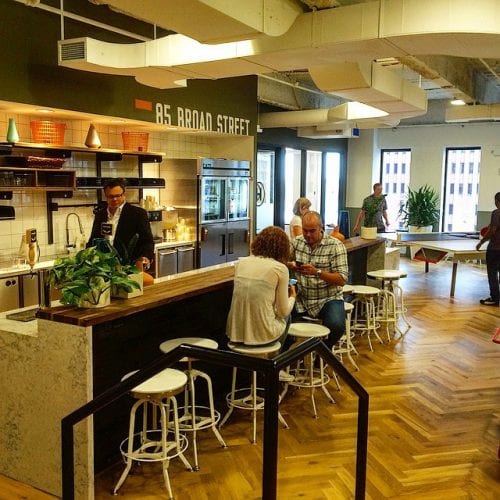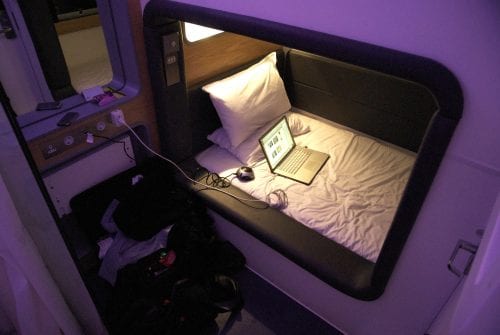The Cornell Real Estate Council’s 36th annual conference took place in New York City on October 19th with a “focus on the future”. Of course, most trades invest heavily in predicting consumer behavior to varying degrees, but real estate professionals take a particularly sober interest in future trends because our products are inherently durable and long-lasting. Decisions made in the design and development phase, indeed all phases, will be passed on to future tenants and owners. One of the main goals for property developers is to market a product that appeals to the changing demographics of the workforce. Though with the uncertainty of near-term transportation and retail behavior, for instance, the flexibility of uses of space has increasingly become an important consideration.

The second conference panel of the day addressed these issues head-on. It was moderated by Alan Tantleff of FTI Consulting and included industry leaders on various sides of the conversation – with Roee Adler of WeWork Labs and Chris Kelly of Convene representing the leaders in the office space revolution and Peter Smith of Bloomberg representing the world of traditional corporate real estate. Adam Flatto, president and CEO of the Georgetown Company, rounded out the panel by representing a large-scale developer with interests in many mixed-use projects.
The diversity of the participants involved was a tribute to the wide-ranging implications of future uncertainty in real estate, but it was dominated by a refrain of “out with the old, in with the new.” Bloomberg’s Peter Smith noted that the world of corporate real estate is complacent with its aging leadership and time-tested habits, but he also conceded that large corporations like Bloomberg cannot hope to understand the changing nature of office space without making allowances for the input of young professionals who will ultimately use the space. Leaders in corporate real estate must be good stewards of their companies’ assets– and by extension, their companies’ culture. Smith acknowledged that the best talent is young talent coming out of universities, and in order to acquire that talent, corporate real estate professionals must cultivate an environment that offers competitive amenities and social benefits.
This is where WeWork’s Roee Adler, a native of Israel with a self-described “inherent disrespect for authority,” excels. WeWork’s business is modeled around the behavior of the next generation of office workers, who demand a higher quality of life and likewise greater access to amenities where they spend their working hours. While traditional offices are characterized by maximally productive spaces, Adler explains, “we try to create spaces with greater intent.” An office designed thoughtfully and with consideration of the well-being of its users can promote emergent ideas serendipitously. The commingling of people in an office is in stark juxtaposition with the stuffy cubicles of yesteryear, and, as Adler explains, “people thrive when they are around other people”.
Adam Flatto of the Georgetown Company tended to agree with that sentiment. For example, he described a trend in hospitality where hotel operators are hoping to get business travelers out of the solitude of their suites and into the common areas of hotels. Consequently, designers of new hotels targeted at business travelers are designing smaller guest rooms with more shared amenities (though Chris Kelly of Convene lamented the demise of in-room coffee stations). Typical guestrooms were around 330 square feet in the 1990’s, but Marriott’s Moxy line of hotels sports rooms almost half of that size, yet increasingly more technologically advanced. For younger travelers, having slow or spotty internet access is a non-starter.

The changing nature of how we live, work and play also factors significantly into corporate decision making as companies seek to redefine their cultures. For one, the demographics entering our office spaces may not know anything different than fully integrated tech. Kelly dubbed Millennials and Generation Z office workers as “digital natives” who have been using smartphones and personal computers for nearly their entire lives, and often depend on integrated technology to drive their productivity. But, as Kelly also notes, anyone can integrate with the changing behavior of office work, and often older generations are more adaptive to a changing work environment than younger ones. The global nature of the industry has moreover created a class of office workers that work remotely, such as those in business development or sales. Adler emphasized these “digital nomads” as a major factor in WeWork’s success. Until the advent of coworking spaces such as WeWork’s, office space was grossly underutilized. Companies with significant office assets have discovered that this model presents an opportunity to greatly economize how office space sits on these companies’ balance sheets.
To round out the discussion, planners also received a nod. Planning policy and economic incentives can greatly influence how we live, work, and play. The panel agreed that cities and towns ought to be continually adapting to this generational paradigm shift as it effects design and use requirements across all assets classes. Some of the most iconic American brands are uprooting from the suburbs and moving to the cities to attract the best talent – in part because of the inherent public amenities and urbanization economies offered there. Perhaps the moral of the day is that communities depend on the cooperation of real estate and public sector professionals alike if our built environment hopes to accommodate society’s changing tastes in the coming decade.
